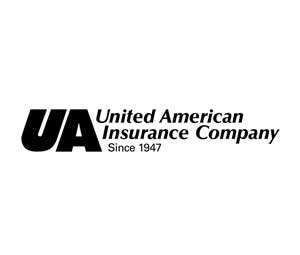Choosing a Plan
Buying life insurance is not like any other purchase you will make. When you pay your premiums, you’re buying the future financial security of your family that only life insurance can provide. Among its many uses, life insurance helps ensure that, when you die, your dependents will have the financial resources needed to protect their home and the income needed to run a household.
Choosing a life insurance product is an important decision, but it often can be complicated. As with any other major purchase, it is important that you understand your needs and the options available to you.
The main types of life insurance available are term and permanent. Term life insurance provides protection for a specified period of time. Permanent life insurance provides lifelong protection.

TERM LIFE INSURANCE
Term life insurance provides protection for a specific period of time. It pays a benefit only if you die during the term. Level term products are the most popular plans purchased today. The level term can be from 5 years to 30 years. The premium and death benefit are designed to stay level during the term of the contract. The premiums can be either guaranteed or not guaranteed. When purchasing a level term life insurance policy be sure you are aware of the guaranteed premium period. Once you have been approved and placed the policy in force with the first payment, the insurance company is obligated to keep the policy in force as long as you keep paying the premiums. You are not obligated to pay, but once you stop paying, the policy will lapse after usually a 30 day grace period. Some term insurance policies can be renewed when you reach the end of a specific period which can be from one to 30 years.
Advantages and Disadvantages of Term Insurance:
Advantages:
Disadvantages
Questions to Consider When Considering a Term Policy
PERMANENT LIFE INSURANCE
Permanent life insurance provides lifelong protection and is known by a variety of names. These policies are designed and priced for you to keep over a long period of time. If you don’t intend to keep the policy for the long term, it could be the wrong type of insurance for you.
Most permanent policies including whole, ordinary, universal, adjustable, and variable life have a feature known as “cash value” or “cash surrender value.” This feature, which is not found in most term insurance policies, provides you with some options:
What are the Types of Permanent Insurance?
There are many different types of permanent insurance. The major ones are described below:
Whole Life or Ordinary Life
This was the most common type of permanent life insurance. It is Life insurance that is kept in force for a person’s whole life as long as the scheduled premiums are maintained. All Whole Life policies build up cash values. Most Whole Life policies are guaranteed as long as the scheduled premiums are maintained. The variable in a whole life policy is the dividend which could vary depending on how well the investments and other business criteria of the insurance company are doing. If the company is doing well and the policies are not experiencing a higher mortality than projected, values are paid back to the policyholder in the form of dividends. Policyholders can use the cash from dividends in many ways. It can be used in three main areas: to lower premiums, to purchase more insurance, or to pay for term insurance.
Universal Life or Adjustable Life
This variation of permanent insurance allows you, after your initial payment, to pay premiums at any time, in virtually any amount, subject to certain minimums and maximums. You also can reduce or increase the amount of the death benefit more easily than under a traditional whole-life policy. (To increase your death benefit, you usually will be required to furnish the insurance company with satisfactory evidence of your continued good health.)(Decreasing does not lower premiums.)






